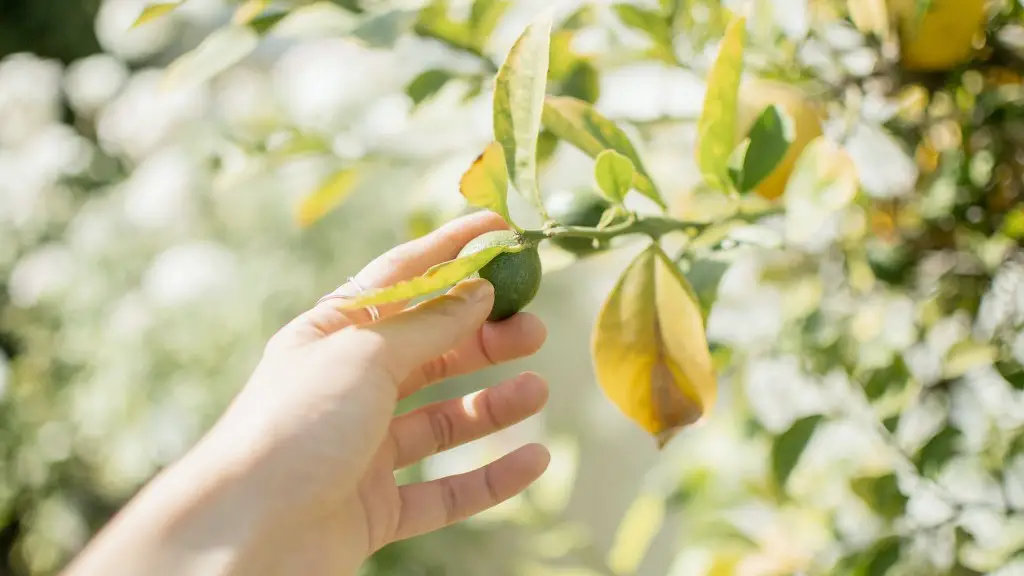If you love to garden, then you probably know the disappointment of not being able to revive a lemon tree. For many gardeners, this can be the tipping point where they give up on the activity. But, it doesn’t have to be. With the right steps, you can give your lemon tree the best chance at a full recovery. Here’s how to revive a dying lemon tree.
Step One: Identify The Problem
The first step in reviving a lemon tree is to identify the root of the problem. The cause of the problem could be anything from soil that’s too acidic or alkaline, to lack of sunlight or a fungal infection. Knowing what’s causing the lemon tree to suffer is essential for understanding what the next steps are.
Step Two: Amending The Soil
Once you have identified the problem, the next step is to amend the soil as necessary. Depending on the cause of the problem, this could include adding compost, adjusting the pH of the soil, or adding fertilizer. These amendments should be tailored to the specific needs of your lemon tree.
Step Three: Adding Mulch
Mulching is an important part of reviving a lemon tree. Mulch helps the soil retain moisture, and it also serves as insulation and prevents weed growth. While there are many different options for mulching, organic mulches such as dead leaves or grass clippings typically work best.
Step Four: Pruning Stems
Pruning is often overlooked as an essential part of reviving a lemon tree. Pruning helps the tree from becoming top-heavy and keep the branches from crowding each other out. Additionally, pruning helps balance the structural integrity of the tree, which can help reduce the chances of it falling over during storms.
Step Five: Aim for the Right Conditions
For the tree to have the best chance at recovering, it’s important to maintain the right growing conditions. This means making sure that the tree is getting enough sunshine and water, as well as maintaining a balanced soil pH. It also means giving it enough space so that its root system isn’t crowded.
Step Six: Treating Diseases
In some cases, the lemon tree may be suffering from a fungal infection or insect infestation. In these cases, it’s important to treat the tree with the right fungicides or insecticides. Make sure to read the instructions on the product carefully and adhere to the safety precautions.
Step Seven: Monitor The Progress
Once you have taken all the steps outlined above, it’s important to monitor the progress of the lemon tree’s recovery. This can be done by inspecting the tree on a regular basis and looking for signs of improvement. To get the most accurate tracking of the tree’s progress, it may be helpful to take photos of the tree at regular intervals.
Recognizing Signs of Ill Health
Before you can begin the process of reviving a lemon tree, it’s important to recognize signs of ill health. Some common warning signs include yellowing leaves, wilting, branch dieback, and root rot. If you spot any of these issues, it’s important to take action as soon as possible; the sooner you can begin taking remedial steps, the better your chances of success.
Checking the Soil and Root System
Once you recognize the signs of ill health in your lemon tree, the next step is to investigate the soil and root system. Depending on the condition of the soil and root system, you may need to amend the soil or add additional organic matter. It’s also essential to check for signs of disease or insect infestation.
Providing Adequate Nutrition
The next step in reviving a lemon tree is to make sure that it’s receiving adequate nutrition. Fertilizers can be beneficial in this regard, as they help the tree to develop strong roots and foliage. However, it’s important to use the right kind of fertilizer for citrus trees and apply it according to the instructions.
Improving Irrigation Systems
Lastly, it’s important to improve any existing irrigation systems in order to help your lemon tree recover. This includes ensuring that your tree is getting the right amount of water, as well as ensuring that the water is being applied evenly to the tree. If an irrigation system is needed, make sure to choose a system that is suited to your particular climate and soil type.

